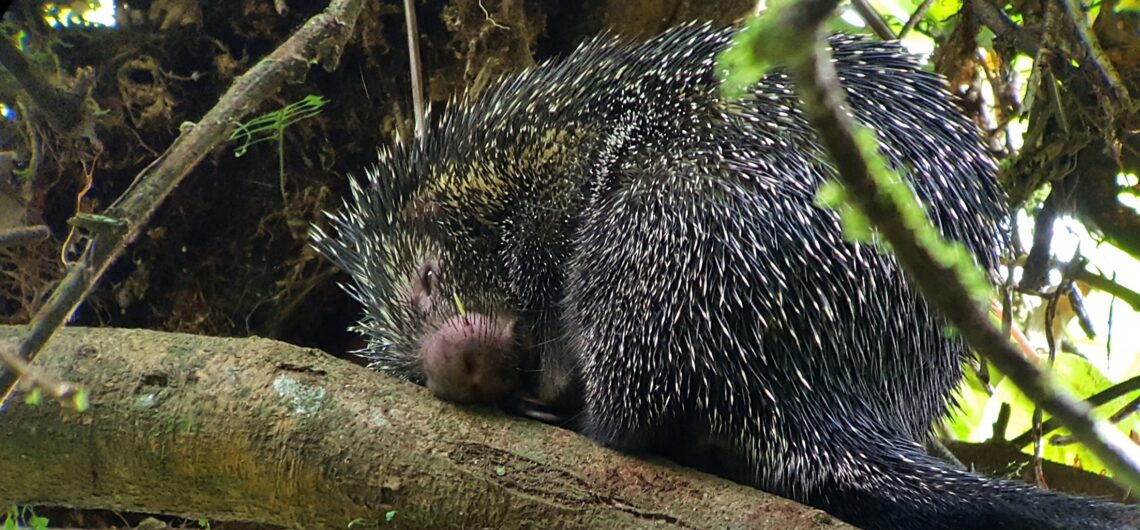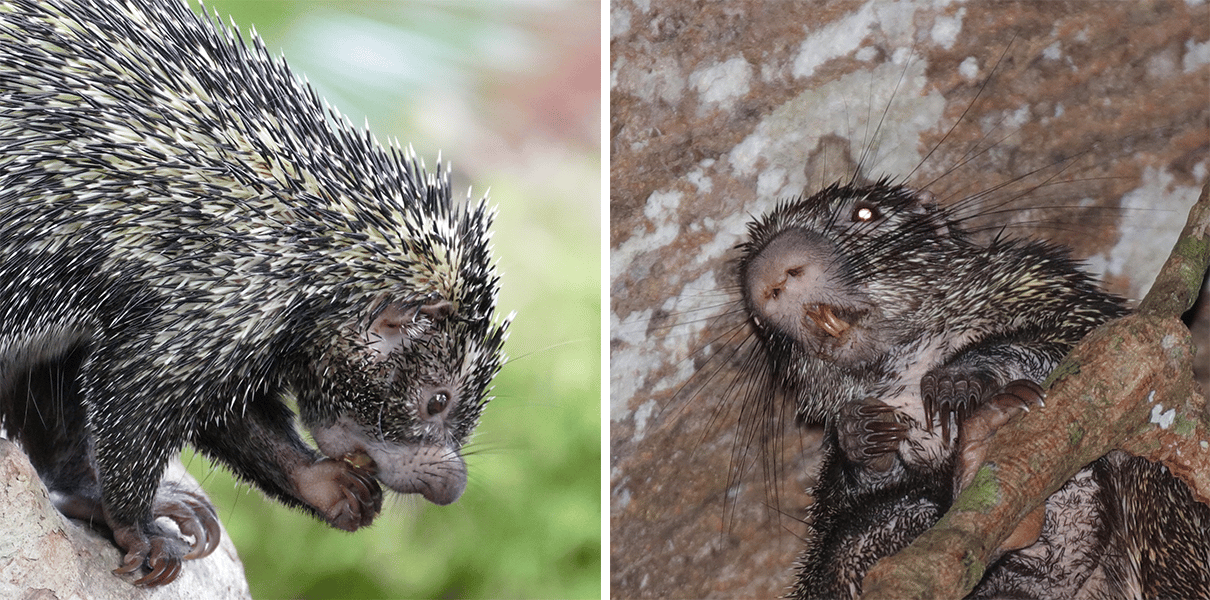Rothschild’s Porcupine
Coendou rothschildi
The Rothschild’s Porcupine is a mysterious animal in many ways. An uncommon and nocturnal species, it has barely been studied in the field and its behavior and ecology remain poorly known. Its taxonomic status is also in dispute. Most interestingly for our purposes, the Rothschild’s Porcupine has never been recorded with certainty outside of Panama and so is officially regarded by many sources as a Panamanian endemic. With some luck, these porcupines can be found on nighttime excursions, or even at daytime roosts, at or around all three Canopy Family properties, although they are most often seen near the Canopy Tower.
The Rothschild’s Porcupine is almost entirely covered with black and yellowish-white spines, excepting its underbelly and its bulbous pink nose. Its tail is prehensile, as its lifestyle is mostly arboreal. It is active at night. Its diet includes fruits and leaves, and Canopy Family guides have observed that it is especially fond of Membrillo fruits (Gustavia superba). Its natural predators include the ocelot. Published sources report that it spends the daytime sleeping in vine tangles near the tops of trees. However, at least one individual has been observed many times by Canopy Family guides and guests sleeping in a tree cavity along Semaphore Hill Road near the Canopy Tower. Obviously, more remains to be learned about this enigmatic creature!
The Rothschild’s Porcupine belongs to the family of New World porcupines (Erethizontidae), which are more closely related to agoutis and pacas than to Old World porcupines. Although some taxonomic authorities treat the Rothschild’s Porcupine as a full species, others consider it a subspecies of the Bicolored-spined Porcupine (Coendou bicolor) of South America, or combine it with the Andean Porcupine (Coendou quichua) of western Colombia and Ecuador, which is itself sometimes considered a subspecies of the Bicolored-spined Porcupine. The IUCN, which combines the Rothschild’s Porcupine with the Andean Porcupine, lists that species’ conservation status as Data Deficient, reflecting the uncertainties surrounding its taxonomic status and ecological requirements.
Etymology: The Rothschild’s Porcupine is named, as are many other mammals, birds, and butterflies around the world, in honor of British zoologist and politician Lord Lionel Walter Rothschild.
Photos by Carlos Bethancourt (left) and Jonathan Slifkin (right)
References
Beolens, B., M. Watkins, and M. Grayson (2009). The Eponym Dictionary of Mammals. The Johns Hopkins University Press, Baltimore, MD, USA.
Delgado, C. (2016). Coendou quichua. In The IUCN Red List of Threatened Species. https://dx.doi.org/10.2305/IUCN.UK.2016-2.RLTS.T136702A22214415.en
Reid, F. (2009). A Field Guide to the Mammals of Central America & Southeast Mexico. Oxford University Press, New York, NY, USA.


